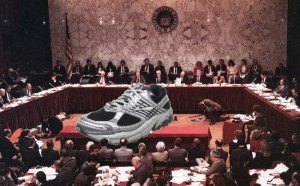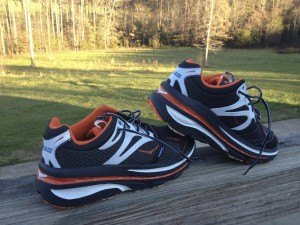
For those interested in running no doubt you would have come across news of the Class-action lawsuit against Vibram Five Fingers that was settled back in May. Since then those who had long scoffed at the shift away from big bulky running shoes, have been trumpeting that “Finally the minimalist movement is exposed for the fad and con that it is!”. The crutch of most articles was “Let’s get back to sanity and realize our feet need a lot of stability control, structure and high tech functions that modern shoes provide”. Casual observers have assumed that the ‘barefoot running fad’ is over and undoubtedly this has been a major setback to the minimalist movement. A friend of mine owns a running shoe store and he reports sales of Vibram Five Fingers have all but ceased.

The major shoe manufacturers who stuck to their “high tec” shoes breathed a sigh of relief. And just last week in response to the sharp decline in sales they have offered a full money back guarantee for all their shoes. There has also been a growth in ultra-marathons and Ironman triathlons and the use of the extra cushioned shoes such as the Hoka One One, which have been termed ‘maximalist shoes’. Most neglect to note that these shoes have no stability features, have a low drop from heel to toe and in fact share more in common with barefoot shoes than they do with traditional ‘big bulky shoes, such as a Brooks Beast or Asics Kayano.

So let’s take a closer look at the lawsuit – what was this Vibram lawsuit actually about, why did they lose and what does it really mean? Firstly, Vibram wasn’t being sued for making shoes that hurt your feet or cause injuries. All shoe companies make claims about their shoes and how they will help, Vibram just were not as smart and did not have theirs checked by competent lawyers: Here are the statements issued by the company which led to the lawsuit.
Five Fingers:
1. Strengthen muscles in the feet and lower legs
2. Improve range of motion in the ankles, feet, and toes
3. Stimulate neural function important to balance and agility
4. Eliminate heel lift to align the spine and improve posture
5. Allow the foot and body to move naturally
Science is not clear on these 5 statements, although there is a trend…that suggests these statements may well be true – which has become stronager since the class action was lodged.

In answer research shows:
1. Yes, less shoes seems to strengthen muscles in the feet.
2. No idea if it improves range of motion in the ankles, feet, and toes.
3. Less interference between the foot and the ground can improve balance.
4. Yes, if you eliminate heel lift you change the posture… certainly closer to how we evolved… but no idea if it’s better – it may depend on the pace you run.
5. Shoes clearly change the way we move. Yes, walking/running with less shoe (like FiveFingers) will be closer to “more natural” form than big bulky shoes.
Although not proven scientifically we strongly believe that less shoe:
1. Strengthens muscles in the feet and lower legs
2. Improves range of motion in the ankles, feet, and toes
3. Stimulates the neural function important to balance and agility
4. Eliminates heel lift to align the spine and improve posture
5. Allows the foot and body to move naturally.
Now we just have to demonstrate all of the above with quality studies!
In our opinion many of these new wave of running injuries have been exacerbated more by the move towards forefoot running than the move to minimalist shoes. People have come to assume running on the forefoot is ‘the best’ way to run, and heel striking should be avoided at all costs. However For most recreational runners and triathletes a gentle heel strike is a better and safer way to run. And yes, you can run with a heel strike barefoot, in Newtons or in Vibrams and many do.

So should you give up on Vibrams? I’d say for most runners they are unlikely to progress to doing all their running in barefoot shoes, but they can be a useful training tool. But remember there are a hundred steps from a Brooks Beast to a barefoot shoe and almost all runners will do better to move away from support and towards a more flexible shoe with a lower drop from heel to toe. For more information on how to select the right running shoe, see our article here.

